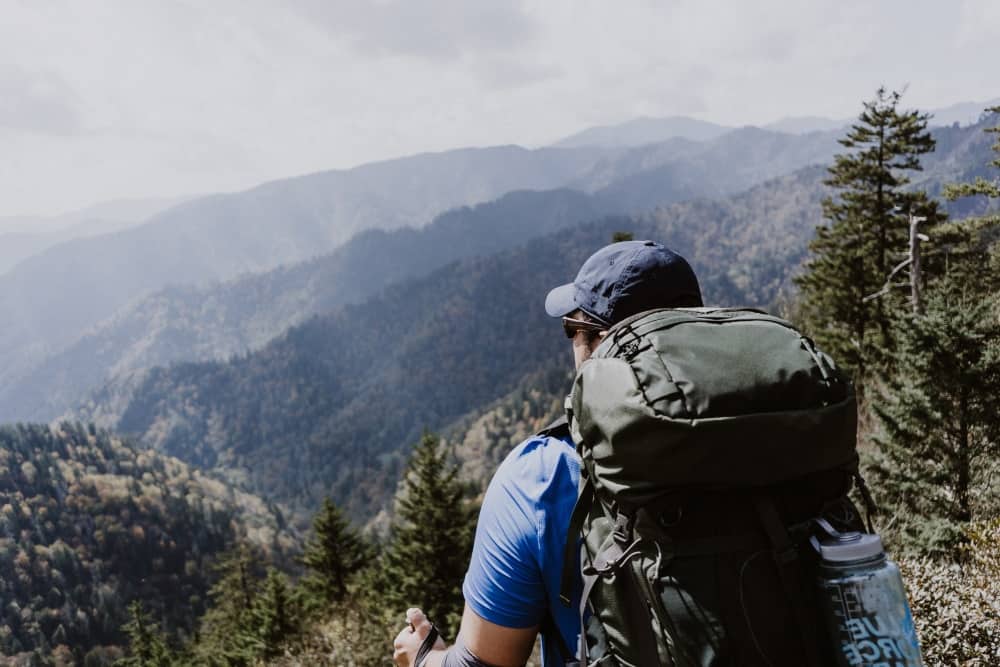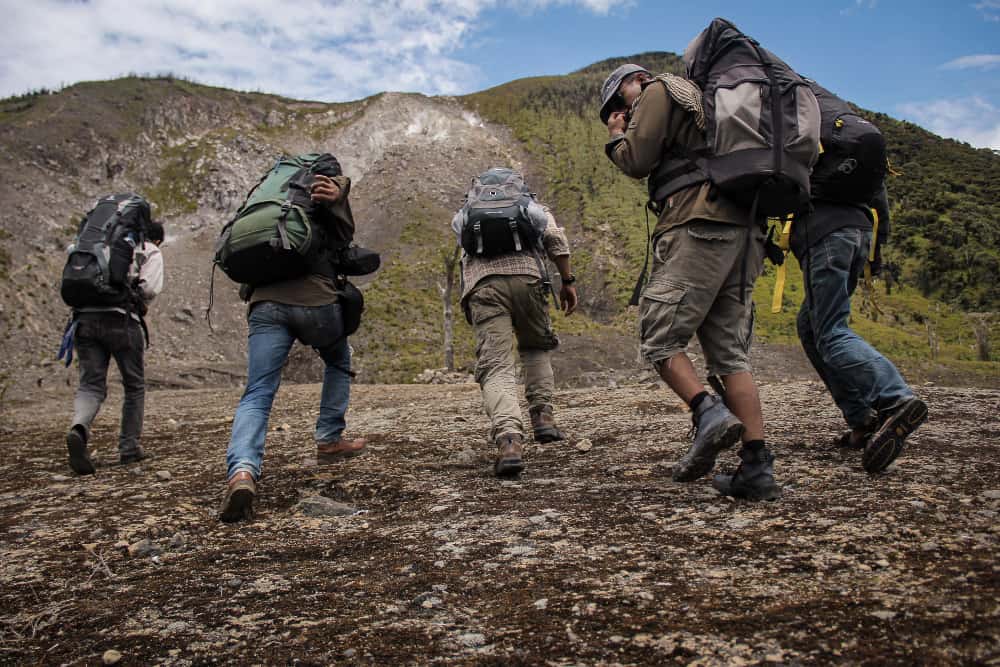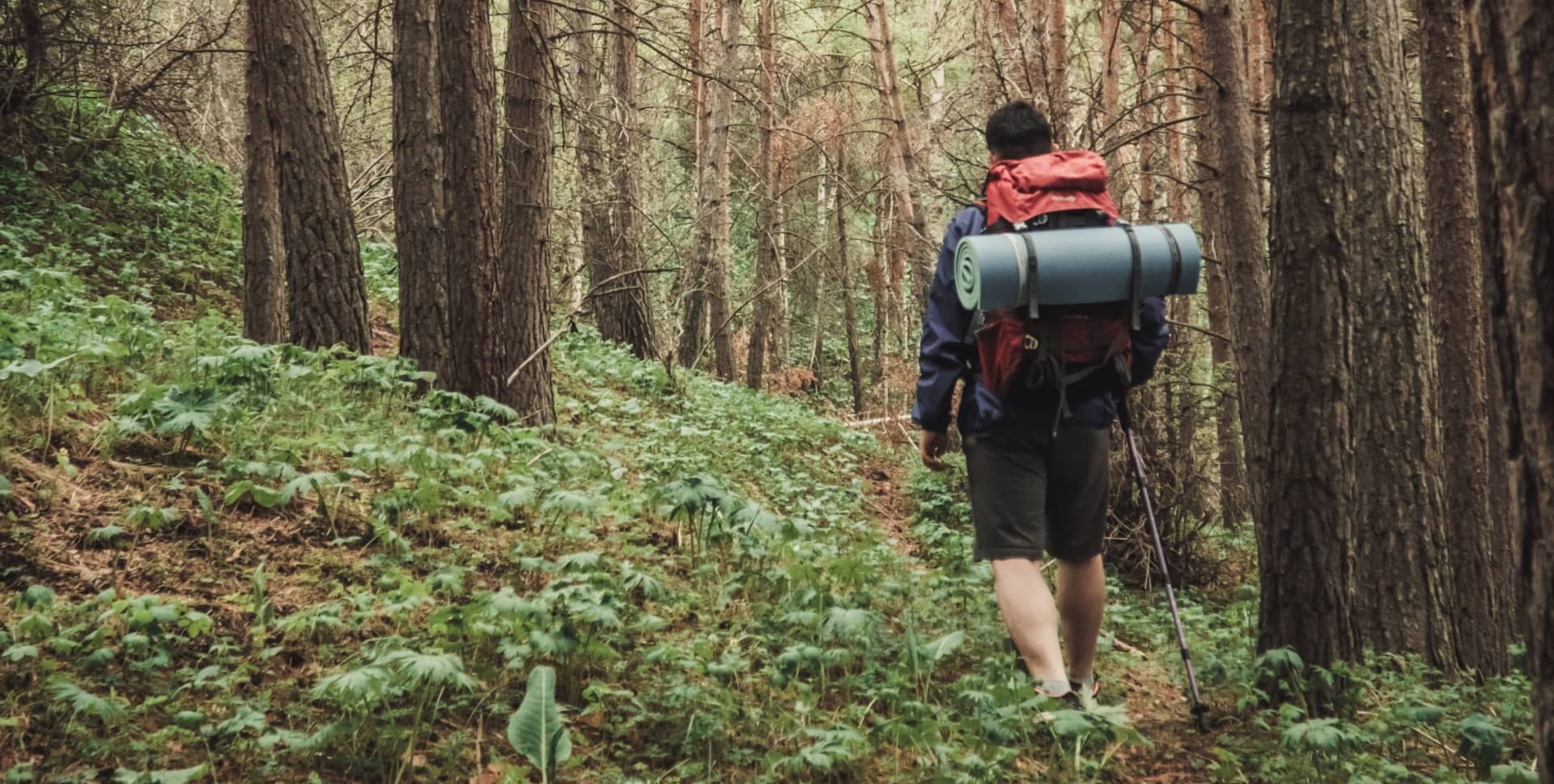Thinking about doing longer thru-hikes? How does a week or two on the Pacific Crest Trail sound? Maybe completing the whole 2190 miles of the Appalachian National Scenic Trail is on your bucket list?
These trails, amongst others like the Continental Divide Trail and the Ice Age Trail, take weeks if not months to complete end to end. You can do just parts of them but the point of these treks is that they are multi-night backpacking trips, not casual day hikes and as such, you need to pack smart and light when thinking about attempting these trails – or parts of them.
People vary on their levels of comfort, need to be clean, sleeping temperatures and comfort as well as how wet they can tolerate being and how often they need to refuel and their basic camping ability, so any thru hikers checklist will never work for all people.
Use our essentials thru-hiking packing list as a guide for items you’ll certainly need on the trip and then research, trial, and use the gear so you are comfortable with it before buying and setting off on months of glorious life-changing trekking.
You don’t need to go super mega ultralight in the beginning but you will need to significantly offload a lot of normal backpacking gear to save your knees, feet, and sanity. It’s almost a given that you’ll start off with too much gear, but with practice and experience, you’ll be able to offload gear over time, and then you’ll know what you can live without and what you can’t!
Welcome to the world of thru-hiking!
Shelter
-
Tent, poles, stakes/pegs, mallet, rainfly, or tarp
-
Footprint
-
OR Hammock with a rain fly and bug net
- Add new
Related: Looking for a tent that holds up in the cold? Check out our list of great four season winter tents.
Sleeping
-
15-20° Sleeping bag
-
Sleeping bag liner
-
Stuff sack to keep your sleeping bag dry
-
Sleeping pad
-
Inflatable pillow
- Add new
Walking
-
40-65 liter internal frame backpack
-
Hiking pole. (can double as a tent pole too)
-
Guide book for your thru trail
-
Boots and / or trail runners
- Add new
Cooking
-
Canister camping stove
-
Extra stove fuel, lighter
-
Firestarter – just in case
-
Cooking pot
-
Spoon
-
Multi-tool or Swiss Army knife
-
Dishcloth
-
Water purification system
-
Resealable plastic bags for food storage.
-
Stuff sack for food
- Add new
Eating
-
Multi-use cup/bowl/mug/pot
-
Knife and spoon
-
Water bottle
-
Water bladder
- Add new
Wet weather protection
-
Rain and wind jacket
-
Waterproof pack cover
- Add new
Clothing
-
Wool or synthetic base layer – that you literally won’t take off
-
Fleece or down mid-layer
-
Insulating jacket, top layer, down or synthetic
-
1x Hiking bottoms. Synthetic
-
1x Rain and wind jacket
-
1x Rain pants – check your guide to see if you’ll need them on your trail
-
2x underwear, 2x socks, 1x sports bra
-
2x Socks. Merino wool. 1x for camp, 1x for walking, 1x thick pair for cold nights
-
Woolen gloves, if it will be cold
-
Beanie. Merino or synthetic
-
Plastic bag for dirty/wet clothes
-
Stuff sack to keep camp clothes dry
-
Camp clothes: Wool polyester or synthetic leggings and a spare top
-
Camp shoes/sandals to give your feet a break
- Add new
Toiletries
-
Toothbrush
-
Toothpaste
-
Antibacterial soap
-
Small quick-dry towel
-
Hairbrush
-
Toilet paper
-
Toilet trowel
-
Medications
-
Waterless hand sanitizer
-
Anti-chafe
- Add new
First Aid Kit
-
Antiseptic wipes
-
Antibiotic cream
-
Gauze pads
-
Ibuprofen or preferred painkiller
-
Antidiarrhea tablets
-
Antihistamine
-
Sewing needle with dental floss for thread
-
Blister tape
-
Duct tape (works as a bandage, splint, covering)
- Add new
Personal Protection
-
Sunglasses
-
Insect repellent
-
Sunscreen
-
Chapstick or lip balm
-
GPS subscription
- Add new
Lighting
-
Headlamp
-
Spare Batteries
- Add new
Luxuries
-
Smartphone/phone case and power bank
-
Notebook and pencils (pencils write on wet-ish paper)
-
Downloaded books, star charts, and field guides
-
Camera
-
Deck of cards
- Add new
Useful things
-
Watch
-
Parachute cord
-
Emergency beacon
-
Tent pole repair
-
Compass or navigation device
-
Credit card/cash/Identification
-
Bear Spray
-
Head Net
-
Whistle to attract attention
- Add new

Hints and tips for the first time thru-hikers
Hiking clothes
- Never wear cotton clothes. Cotton absorbs moisture, is a poor insulator, doesn’t wick away from your skin, and retains odors longer.
- Keep one set of dry clothes exclusively for camp. You’ll feel better, offend fewer people and lessen your chances of hypothermia.
- Wool or synthetic fabrics are best for hiking. Down, wool, or synthetic for camp.
- If you hike in shorts, make sure you have a pair of long wind pants for those cold windy parts of the trail.
- Cold weather gear really is needed for the first and last 500 to 600 miles of the Appalachian Trail.
- An umbrella could be very useful in the rain and in the sun when crossing wide-open spaces.
Hiking footwear
- There is a trend for thru-hikers to wear trail runners for part or all of their trips. Boots are better for heavy packs, rocky terrain, and ankle stability. Trail runners dry out faster are lighter and give hikers fewer blisters. Well and truly break in any shoes before you set off on long hikes.
- Buy your shoes a size too big. Your feet will swell.
- Camp shoes should be the lightest thinnest flipflops you can find to save weight and space.
- Waterproof shoes and boots take a LOT longer to dry out than NON-waterproof footwear. Good to know.
Sleeping
- Make sure your sleeping bag will compress enough to take up as little room as possible in your backpack (or attach it to your backpack instead).
- Treat your sleeping bag to waterproofing before you leave if you’re worried about its water resistance.
- Always bring a tent or shelter. Even though there are huts along many of these trails, they are often full by nightfall.
- Inflatable and combination sleeping pads are a bit more expensive than foam pads but more durable and less bulky in the long run.
Personal Safety
- Get a GPS subscription so you know where you are and so does your family even when cell phones are out of range.
- Get a really comfortable headlamp, 120 lumens or higher if you plan to do a lot of night walking. Get one with simple settings you can work in the dark and a red mode.
- Getting Gaudia is not much fun so make sure you get a water purification system and don’t take the risk.
- More hikers get sick from sharing food and items than from not treating water properly.

Thru-hiking is not something you should be doing on a whim. Trails that take weeks or months to complete need to be worked up to and the people who have the worst time, tend to be those who are completely unprepared with lots of initial enthusiasm and no real experience.
If you are a camper already, start doing some multi-day hikes and get some experience with your gear and what you can personally handle, hiking and weight-wise, and work up to these longer, more challenging trips.
The more multi-night hikes you do, the more you will be able to refine your gear and be able to work out what works for your level of comfort and what your body can handle. The best way to make decisions about gear is to use it in the field!
This list has been compiled to give you an idea of how much (or how little) you will need to do these months-long trails and to start you thinking about planning and working towards knocking over one of your own personal ambitions!
Imagine how you’ll feel walking out of the Appalachian Trail on your last day having completed every inch of the 2190 miles of it!
Happy Hiking! 😊
